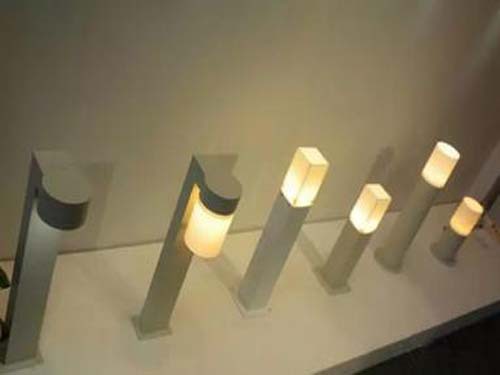
Under the background of the slowdown in economic growth, the delisting of the real estate market is one of the five major tasks of China’s economy this year. With the increase in income levels and the acceleration of urbanization, the focus of LED lighting consumption has been extended to the second and fourth tier cities. At present, the layout of big brands in first-tier cities is relatively mature and the market competition is fierce. The second-third and fourth-tier cities are still blue oceans. It is difficult for big brands to completely cover them. Small and medium-sized brands can enter the market.
"Destocking" Drives Market Recovery
The delisting of the property market is still one of the priorities for the government in 2016. Since the Spring Festival, as the state and local governments downgraded the down payment ratio, reduced the deed tax business tax, liberalized purchase restrictions and introduced a series of favorable policies for the property market, the real estate market set off an upsurge, and the volume of new and second-hand housing transactions increased substantially.
At this stage, "de-stocking" has been in a hot trend throughout the country. Among them, Guangdong Province will digest 26.3 million square meters of inventory in the next three years; Chongqing said that the target of real estate destocking this year is 8 million square meters. In Hebei and Fujian, multiple incentive policies have been introduced to support farmers' purchases in cities. At present, the price of first-tier cities in the real estate market has risen, and the number of second-tier cities has increased moderately. The third and fourth-tier cities have not yet risen.
In general, the “de-stocking†policy will activate some potential incremental markets and bring new growth needs. The warming up of the upstream real estate industry will drive the economic development of the building materials, home improvement, lighting and other industries. With the rigid demand for real estate and improvement of demand being gradually released, the demand for home lighting and commercial lighting will be greatly boosted. Among them, home lighting ceiling lamps, downlights, spotlights, commercial lighting spotlights, track lights, etc. will become key products.
All along, the demand for home lighting fixtures is directly proportional to the volume of real estate transactions. "The property market goes to inventory" means that the renovation of new houses requires more lighting fixtures. For rigid purchasers with purchasing power, for the sake of funding, they will pursue more cost-effective LED lighting products. The price may still be the dominant factor. For rigid demanders in first-tier cities, they will consider high-quality, large-brand LED lighting products due to their lifestyle habits and financial strength.
In response, Liu Cheng, general manager of Shandong Yutai Optoelectronics, stated that real estate destocking has provided good opportunities for lighting products to enter into millions of households, and there will be a clear upward trend in the demand for lighting lighting products involved in home improvement. This has a great impact on home lighting, but it may take some time to gradually reflect it.
At the same time, real estate destocking can increase the demand for engineering lighting, and will provide lighting companies and businesses with more important business opportunities such as cooperation with real estate developers, project bidding, and group orders. As early as 2011, Mitsuo Aurora signed a strategic cooperation agreement with Vanke Group to provide LED lighting and lighting solutions for Vanke Group and was awarded as a qualified material equipment supplier by Vanke for 7 consecutive years.
Transfer to third-tier cities
Recently, the property market has been booming, housing prices in first- and second-tier cities have soared, and prices in third- and fourth-tier cities have been narrowed by the “sales to the property market†policy. With the advancement of urbanization in the country and the saturation of the primary market, the consumer potential of the secondary and tertiary markets is gradually being opened up.
All along, influenced by the level of consumption, many LED companies have focused their attention on the first- and second-tier cities. However, in recent years, China has continued to advance towards urbanization. The economic growth rate of the third- and fourth-tier cities has been accelerating, and the consumption capacity has increased, and the market potential has also become increasingly prominent. On the one hand, due to high housing prices in first-tier cities, the “new enthusiasm†on the second and fourth lines has risen and buyers have returned home. More and more young people in the 85s and 90s are more likely to choose to settle in the second and fourth tier cities where house prices are relatively low. Their consumer demand is strong, and LED products have higher brand requirements.
We are able to offer a comprehensive range of grinding technology based on a staggered mill series, thereby covering all possible applications:
Mills for lignite with a throughput of up to 200 t/h
Grinding of worldwide coal ranging from lignite to anthracite coal as well as biomass and sewage sludge
High availability and service life thanks to modern ceramic materials
Low-vibration grinding process over the entire load range thanks to specially developed hydraulic grinding power systems
Fast wear part change thanks to hydraulic swivelling of the grinding rollers without dismantling the separator
Realisation of individual, customer-specific turnkey projects
Comprehensive maintenance and repair concepts
Implementation of new equipment in existing plants
Beater Wheel Mills,Beater Wheel Plate,Mb3300 Beater Wheel,Beater Wheel Front Plate
Shenyang Zhicheng Heavy Machinery Manufacturing Co., Ltd. , https://www.zhichengmachinery.com